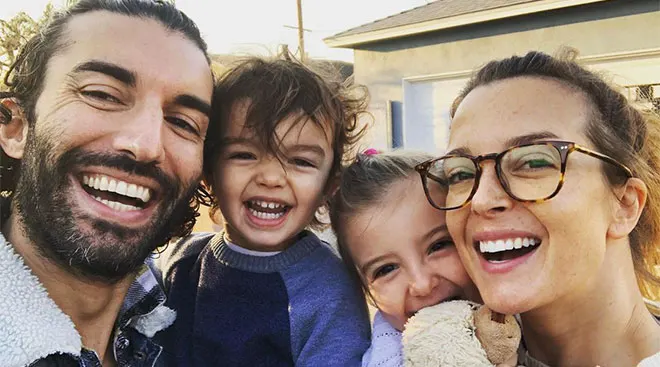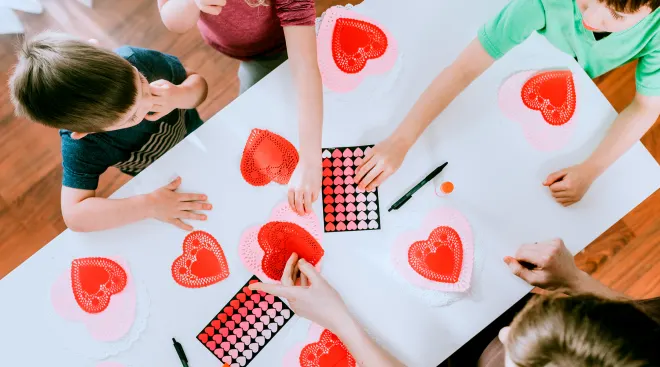When Will Baby's Personality Emerge?
Newborns are off-the-charts adorable, but they don’t seem to have a lot to offer in the personality department. But just like a flower, your baby’s personality will start to slowly unfold and blossom as they grow.
“You’ll have a sense of a child’s temperament basically from birth,” says Vanessa Lapointe, PhD, a registered child psychologist and author of Parenting Right from the Start: Laying a Healthy Foundation in the Baby and Toddler Years. “Most parents will retrospectively be able to say ‘they came out that way.’”
If baby has a more sensitive temperament, Lapointe explains, as newborns they may cry a lot, struggle with sleep challenges and their startle reflex may frequently go off, giving you clues that they’re feeling their new world quite intensely. On the other hand, if your child has an easy going temperament, they may sleep and feed well and generally respond to life outside the womb “as though this is all old hat to them,” Lapointe says.
However, you’ll likely start to see baby’s personality in fuller color as your child becomes more mobile, with crawling and eventually walking, and when you see them more independently indicating preference for everything from the kinds of environments they like to be in to the people they like to be around.”
That greater sense of independence tends sets in when kids turn 2. "For example, by age 2, you can see your sensitive kiddo appearing to shy away, be reactive to, or be angry or aggressive with people who get into their space,” Lapointe says. “Sometimes the radius of life is also increasing for kids by this age, so there are new experiences like preschool to adapt to. And as the ‘new’ mounts, the sensitive child’s coping reserves becoming depleted, behavioral and sleep difficulties may increase, and life in general can just start to feel difficult.”
Many people use the two words interchangeably, but temperament and personality are not exactly the same thing. “Temperament is inherited, while personality develops over time and can be influenced by environmental factors,” says Natasha Beck, MPH, PsyD, a clinical psychologist in Los Angeles and founder of Dr. Organic Mommy. “Temperament refers to individual differences that shape our reaction to various events in our environment as well as how we perceive our environment. In other words, it’s how a child responds to different situations—how easily frustrated they become, how they process those emotions and how they can soothe themselves.”
In fact, temperament is just one part of someone’s personality. “Their temperament and environment help shape a child’s personality, which includes but is not limited to parental involvement, siblings, peers, culture, enrichment and even diet,” Beck says.
Researchers Alexander Thomas and Stella Chess identified three different temperament types:
- Easy. Easy children are more adaptable and generally have mild, positive personalities.
- Difficult. Difficult or feisty children may be more challenging to manage, as they’re more likely to throw tantrums or fuss if things don’t go their way.
- Slow to warm up. Slow-to-warm-up children are generally more cautious or fearful of new situations, and may be shy around new people.
“[Pediatric health expert] Tom Boyce and his colleagues have put forward the concept of the Orchid and the Dandelion, which I find so helpful with my client families and even my own children,” says Lapointe. “Orchid kids are more intense and sensitive, and need everything to be ‘just so’ for them to bloom. Dandelion kids kind of roll with it.”
As for personalities, there are five main facets, according to a popular personality theory known as the five-factor model. They are:
- Extraversion. This describes how outgoing or introverted your child is.
- Neuroticism. This facet describes how easily your child can become irritated or moody.
- Openness. This refers to your child’s curiosity and openness to new experiences and adventures.
- Agreeableness. This is a measure of how kind, empathetic and cooperative your child is.
- Conscientiousness. This facet looks at how responsible and thoughtful your child is.
There’s a lot of debate as to whether nature or nurture is more important in shaping how a child’s personality blossoms—but experts say that both play a key role.
“Nature has a strong influence for sure—and more and more we’re seeing through the science of child development that nurture is very significant,” Lapointe says. “Neuroplasticity is the brain’s openness to external influence, and it’s alive and well in all of us, especially children. So that means that parental responsiveness can have a significant impact on the brain’s wiring and thus the ‘expression’ of a more innate temperament.”
The key thing is to be responsive to your child, picking up on your child’s cues and responding with what they need. “If you have a child who is intense and sensitive, then being responsive means you know when they’re becoming overstimulated, overwhelmed and undone, and you move to take care of that,” says Lapointe. “We refer to that as ‘serve and return’—your child ‘serves’ and you, the capable, responsive and empathic parent ‘return.’ This is the reciprocity of the parent-child relational dance that gifts each child the very best possible chance at growing into the most spectacular version of themselves.”
Please note: The Bump and the materials and information it contains are not intended to, and do not constitute, medical or other health advice or diagnosis and should not be used as such. You should always consult with a qualified physician or health professional about your specific circumstances.
Plus, more from The Bump:
Vanessa Lapointe, PhD, is a registered child psychologist, parenting expert who has been supporting children and families for more than 15 years. She is the author of Parenting Right from the Start: Laying a Healthy Foundation in the Baby and Toddler Years and a regular media contributor.
Natasha Beck, MPH, PsyD, is an LA-based clinical psychologist who specializes in pediatric neuropsychology. She’s also the founder of Dr. Organic Mommy, a lifestyle blog for parents and parents-to-be.
Learn how we ensure the accuracy of our content through our editorial and medical review process.
Navigate forward to interact with the calendar and select a date. Press the question mark key to get the keyboard shortcuts for changing dates.




















































